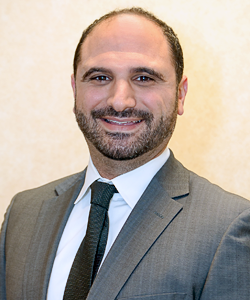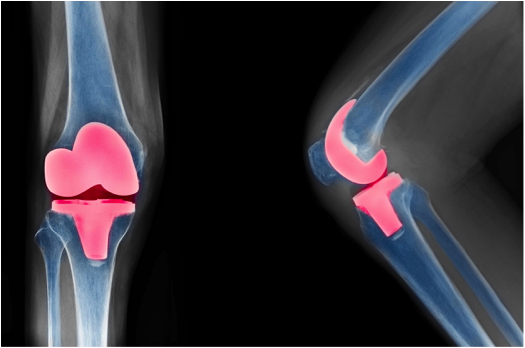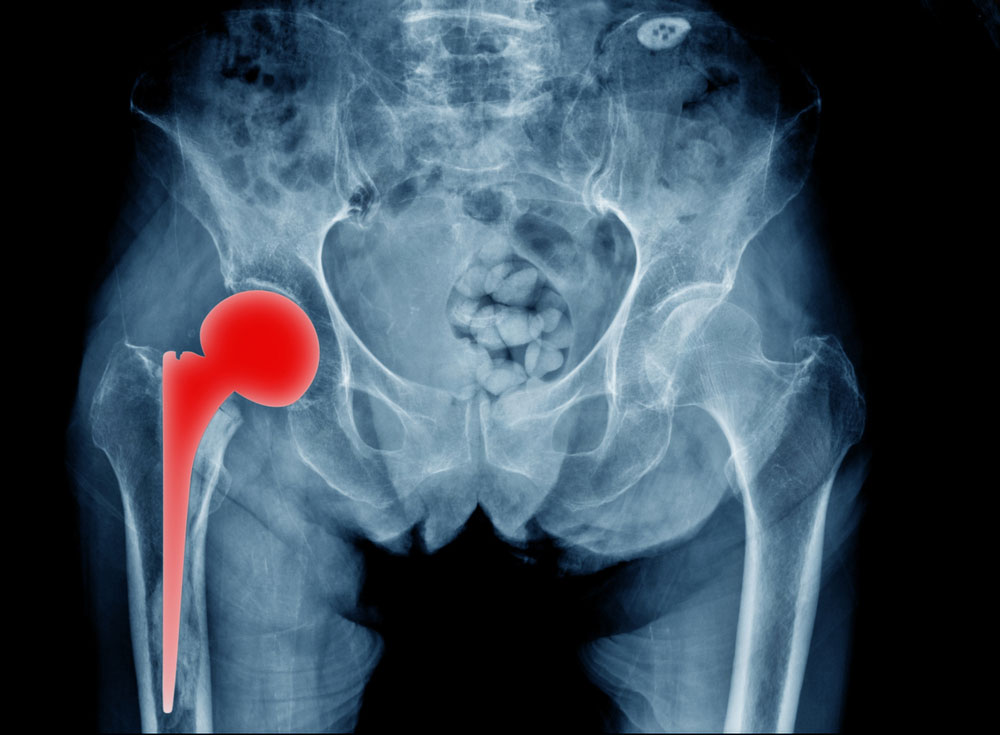Total Joint Specialists at MidAmerica Orthopaedics
Your joint health is an integral part of your body’s overall health and well-being. Healthy joints allow us to walk, run, sit, throw, grab and reach — all movements that contribute to a high-quality and independent life. When your joints become injured, you can lose your ability to perform the simplest of everyday tasks like climbing stairs, lifting objects, or even sitting. To maintain your best quality of life, don’t skimp on the joint care. If joint pain and stiffness is interfering with your everyday life, it’s time to see a specialist.
Total joint specialists are highly trained medical professionals who have studied the complex system of bones, tendons, and muscles that make up the body’s various joints — including the shoulder, knees, and hip. The fellowship-trained physicians at MidAmerica’s Total Joint Clinic include some of the countries top, award winning total joint specialists.

Dr. Sarkis M. Bedikian
Dr. Sarkis M. Bedikian D.O. specializes in innovative hip and knee replacement surgeries, and strives to treat his relationships with his patients as a team effort to achieve optimum well-being.

Dr. Adam F. Meisel
Dr. Adam F. Meisel, MD specializes in sports medicine, arthroscopy and comprehensive shoulder reconstruction. Dr. Meisel aims to return his patients to an active lifestyle, whether that’s as an athlete or “weekend warrior”.
Under the care of, Dr. Bedikian, Dr. Meisel, or any of their colleagues at the Total Joint Clinic, you can rest assured that you will be receiving the highest quality of care from the highest quality of total joint specialists.
When to See a Specialist
If you’ve been experiencing joint pain and a loss of mobility that is affecting your quality of life, it’s time to see a total joint specialist. Without treatment, your joint’s condition will only deteriorate. If you are experiencing joint issues, don’t wait. See a specialist at the MidAmerica Total Joint Clinic, as soon as you can to get on the path to recovery.
Common Causes of Joint Injury and Pain
 When you first arrive to MidAmerica to see a total joint specialist, the first thing your specialist will do is seek a diagnosis to explain your pain and lack of joint mobility. The major culprit when it comes to a majority of joint injuries is arthritis.
When you first arrive to MidAmerica to see a total joint specialist, the first thing your specialist will do is seek a diagnosis to explain your pain and lack of joint mobility. The major culprit when it comes to a majority of joint injuries is arthritis.
Arthritis is an inflammatory condition caused by the breakdown of the cartilage between joint bones. When the cartilage wears away, the bones painfully grind against one another. This friction leads to stiffness, loss of mobility, swelling and pain. Common types of arthritis include:
Osteoarthritis: known as the “wear and tear” arthritis, osteoarthritis is typically seen in older patients and is caused by the repeated motion of the joints which can eventually wear down the cartilage.
Rheumatoid arthritis: unlike osteoarthritis which comes with age, rheumatoid arthritis is an autoimmune disease that causes the body’s immune system to attack otherwise healthy cartilage.
Post-traumatic arthritis: this form of arthritis results after experiencing injury to the joint. Whether you were in a car accident or experienced a sports related injury, trauma to the joint and surrounding muscles and bones can cause the joint cartilage to break down faster.
Treatment
Once your joint issue is diagnosed, your team of joint specialists at MidAmerica will determine the best approach to treatment. Possible treatment methods for various joint injuries or diseases may include:
Non-Surgical
No matter your injury, your team of joint specialists will likely recommend starting with a non-surgical approach, which might include:
- Physical Therapy to strengthen the muscles around the joint and teach the patient the best way to move to avoid further injury to the joint.
- Corticosteroid injections to help fight pain-causing inflammation.
While total joint replacement surgeries have steadily increased in popularity, and produce great results, surgery is still a significant hardship on the body which is why most specialists will opt for non-surgical treatment first. If non-surgical methods such as physical therapy do not effectively improve your joint health and quality of life, your total joint specialist will determine if you are an appropriate candidate for surgery, including total joint replacement.
Surgical
If the condition of your joint does not improve via non-surgical treatment, you may be a candidate for total joint replacement surgery. Total joint replacement surgery involves parts or the entirety of the knee, hip, or shoulder joint bone and cartilage being removed and replaced with a prosthesis. The prothesis, typically crafted from plastic or metal, allows the artificial joint to move and function as a healthy joint would.
Total joint replacement surgeries have been rising in prominence since the 1960s. As time has passed the techniques and prostheses used in total joint replacements have significantly advanced to include minimally invasive surgery techniques and specialty custom implants. Today, total joint replacement is shown to significantly reduce pain and increase function in the case of 90 - 95% of patients.



Total joint replacement surgeries performed by total joint specialists include:
Total knee replacement: Knee arthroplasty, or total knee replacement surgery, is one of the more complex total joint replacement surgeries. Replacing the knee joint involves replacing three parts of the joint, the medial (inside), lateral (outside) and patellofemoral (front) with metal or medical grade plastic.
The prostheses are typically held in place to the leg bones with bone cement or an advanced material that allows for new bone tissue growth to anchor the new joint.
Hip replacement: Also referred to as hip arthroplasty, involves replacing the head of the thigh bone (femur) and the hip socket (acetabulum). The replacement socket is typically crafted from a polyethylene, a medical grade plastic, and the femur head is typically crafted from metal. The metal and plastic slide smoothly against each other, mimicking the movement of healthy joint bone and cartilage.
Shoulder replacement: Similar to a hip replacement, a typical shoulder replacement (also referred to as shoulder arthroplasty) involves replacing the glenoid (shoulder socket) with a plastic prosthesis and the head of the humerus (upper arm bone) with a metal ball.
While this traditional method of shoulder replacement surgery is effective, reverse total shoulder replacement is growing in popularity. In a reverse shoulder replacement surgery, the metal ball is instead placed in the damaged shoulder socket while the plastic socket is affixed atop the arm bone.
This method takes pressure off the shoulder muscles and tendons, including the rotator cuff, which typically help hold and move the ball of the join in the shoulder socket. Reverse total shoulder replacement surgery can help patients avoid other injuries, such as a rotator cuff tear.
Why MidAmerica?
The team at MidAmerica’s Total Joint Clinic is comprised of specialists, surgeons and physical therapists, who are recognized experts in the field of joint treatment and replacement surgery. Our team works with each individual patient’s case to craft the best, least invasive integrative treatment plan to get each patient the best results possible with the shortest recovery time. But don’t take our word for it!
At MidAmerica, we aim to provide the highest quality care marked by courtesy, respect and integrity. To make an appointment at our Total Joint Clinic or to learn more about MidAmerica’s Palos Hills and Mokena clinics and the different treatment options available to you, call (708) 237-7200. Most insurance plans are accepted.

